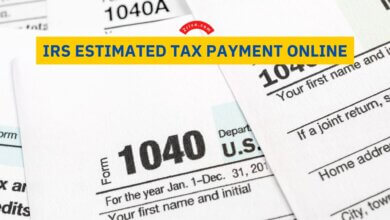A Guide for the Self-Employed
There are a lot of benefits to being self-employed. However, there are also a lot of tax-related responsibilities. As a self-employed, having a guide can help you understand how it all works. This article will explain what it means to be self-employed, how to pay your taxes, and some tips to help you make sure you're filing correctly.

Contents
Self-employed people usually earn their income by running their own businesses. They may do this as an independent contractor, a sole proprietor, or as members of a partnership. Self-employed people may work in various industries, including writing, editing, and trading/investing. They often have a high skill level in their chosen industry and are highly independent. Unlike W-2 employees who have taxes automatically deducted from their paychecks, self-employed people must file annual tax returns and make quarterly estimated tax payments. Fortunately, many tax deductions available for the self-employed can significantly reduce their tax liability.
Depending on the country and jurisdiction, there are different definitions of what constitutes a self-employed person. For example, in the United States, a self-employed person is defined as someone who “performs a gainful activity for his or her own account.” In other words, they are not employed by any particular employer and instead work for themselves, operating their own business.

Which Taxes Must Self-Employed People Pay?
In addition to income tax, self-employed people must also pay Social Security and Medicare taxes. These are generally reported on Schedule C of the Individual Income Tax Return (Form 1040). Estimated taxes are also required to be paid quarterly using Form 1040-ES.
Self-employed individuals must keep track of all their business expenses and income so that they can determine if they have profit or loss. If they have profit, they must report this on Page 1 of Form 1040 or 1040-SR. If they have a loss, they must report this on Page 2 of Form 1040 or 1040-SR.
Self-employed people must carefully budget their money because they don’t have a regular paycheck with taxes automatically deducted. They can use a self-employment tax calculator to help them estimate how much they need to save each month. If they are not careful, they could overpay their taxes and end up with a big bill at tax time.

How Does a Self-Employed Person Pay Taxes?
The first step in filing self-employment taxes is determining your business income. For this, you must subtract your business expenses from your total income. The result is your net profit or loss, which you will then report on Line 31 of your Schedule C. If you are a sole proprietor or single-member LLC, this information will also be included on your Form 1040 tax return.
As a self-employed worker, you will also be responsible for paying your own Social Security and Medicare taxes. These are the same taxes that an employee has withheld from their paychecks, but since you don’t have an employer withholding them for you, you must pay them on your own by submitting a Schedule SE attachment to your Form 1040.

Advantages of Being a Self-Employed Taxpayer:
While self-employment comes with its challenges, it also offers several advantages:
- Self-employment allows individuals to set their own schedule, choose their clients, and work from anywhere. This level of autonomy can provide a greater work-life balance and the ability to pursue personal interests alongside professional endeavors.
- Unlike traditional employment, where your income may be fixed or subject to salary caps, self-employment offers the potential for unlimited earnings. As a self-employed taxpayer, you have the opportunity to increase your income based on your skills, dedication, and business growth.
- Self-employed individuals can take advantage of a wide range of tax deductions that are unavailable to regular employees. Deducting business expenses can lower their taxable income, potentially reducing their overall tax liability.
- Self-employment often attracts individuals with an entrepreneurial spirit. Starting your own business or working as a freelancer allows you to explore your creative ideas, pursue your passions, and build a business from the ground up.

Disadvantages of Being a Self-Employed Taxpayer
Failing to make SE tax payments or paying too little can result in a big bill at tax time, so it’s important to plan ahead and stay on top of your quarterly obligations. A good way to do this is by reviewing your expense records and deductibles throughout the year and adjusting them as you go. You can also use accounting software solutions to keep track of your income and expenses.
One of the biggest challenges for self-employed people is keeping up with filing deadlines. The IRS imposes heavy penalties on late filers, starting at 5% per month and escalating to 25% after five months. Also, late returns can lower your future Social Security benefits and make securing loans or credit cards difficult. To avoid these penalties, setting aside enough money to cover your estimated quarterly taxes and file on time is crucial.
a. Income Volatility: Self-employed individuals may experience irregular income streams, making financial planning more challenging. Economic fluctuations, seasonal demand, or client payment delays can contribute to income volatility, requiring diligent budgeting and emergency funds.
b. Self-Employment Tax Burden: Unlike traditional employees who only pay a portion of Social Security and Medicare taxes, self-employed individuals must pay both the employer and employee portions, resulting in a higher tax burden.
c. Lack of Benefits: Unlike employees who often receive benefits such as health insurance, retirement plans, and paid time off, self-employed individuals must bear the responsibility and cost of obtaining these benefits independently.
d. Sole Responsibility: As a self-employed taxpayer, you are solely responsible for managing all aspects of your business, including marketing, customer acquisition, bookkeeping, and compliance with tax and legal regulations.





